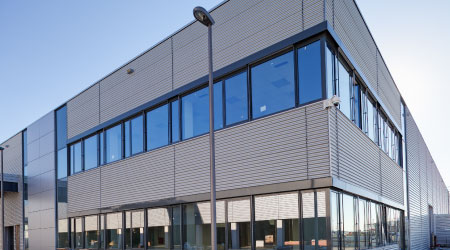Vegetative Roofs Re-Emerge As Viable Option For Commercial Facilities
Vegetative roofs have a long and storied history, dating back centuries. But it's only in the last several decades that vegetative roofs have re-emerged as a viable commercial facilities roofing option. Some of the early attempts at vegetative roofs, though well-intentioned from an environmental or aesthetic standpoint, had issues due to a lack of planning, testing, and technical knowledge. They ultimately failed long before they were expected to.
Decades later, the industry has moved to a point that the use and development of vegetative roof systems has passed the initial evolutionary phases. They're not just a curiosity or novelty anymore, and the early trials and failures, and even the experiments gone wrong by building owners going it alone, are mostly in the past. Vegetative roofing has evolved. Roof systems, including growing mediums, have been developed, tested, and are currently marketed by several highly respected roofing manufacturers. Specifications have been written by industry groups with the tested knowledge to keep manufacturers and contractors on the right track. All of this has been done to provide facility managers with products that they can depend on if they decide that a vegetative roof is a worthwhile investment.
There is plenty of good information about vegetative roofs on the Internet. Facility managers should do their homework and get the most competent professional advice where appropriate. If facility managers are interested in vegetative roofing, evaluating the benefits, as well as potential downsides for the installation of such a roof, is a first critical step in the process of selection.
Environmental benefits include reducing the amount of air conditioning energy used, reducing the urban heat island effect, and reducing storm-water run-off. But it's also important to look at possible advantages of vegetative roofing that may have specific economic benefits, as well.
1. Extension of Roof Service Life
Plants, soil, and covered components of the system offer protection from the elements, including degradation by the sun's UV rays. By protecting the membrane, a vegetative roof can minimize cracks and splits due to the thermal cycle. In some areas of the country, a roof membrane surface that is exposed to the sun may reach temperatures above 160 degrees F during the day and drop below freezing that night. The resulting expansion and contraction wreaks havoc on the membrane. But with a vegetative roof, this can be minimized, reducing or even eliminating one of the main causes of roof leaks.
As much as a 200 to 300 percent extension of roof membrane service life may be achieved with the use of vegetative roofing. This is backed by the availability of manufacturers' warranties for as long as 30 years for the entire roofing system. In some cases, the warranties can even include the removal and replanting of the vegetation if a leak needs to be repaired.
In addition, using a vegetative roof over the membrane can reduce the risk of hail or wind damage to roofs. Airborne debris such as tree limbs and other windblown items is also much less likely to penetrate the roof during a storm.
Damage caused by human error is another common cause of roof leaks. A maintenance technician may have an object such as a rock or a fastener screw on the bottom of a shoe and cause damage or even punctures to the roof as they walk across it. Even when walkways are provided and clearly marked, workers don't always follow the rules.
Related Topics:













